With its mix of Jane Austin meets Gossip Girl with 35 Shades of Grey, as described by Bridgerton star Regé-Jean Page, Netflix’s Shondaland series has taken pop culture by storm since its Dec. 25 debut. Redefining the period drama and romance genres while making global stars out of Page andPhoebe Dynevor, the adaptation of Julia Quinn’s novel captivated viewers to become one of Netflix’s most watched series premieres.
As we are awaiting a formal green light for Season 2, now casting, here is a deep dive into the Bridgerton phenomenon with fascinating Season 1 details from one of its key auspices, director Julie Anne Robinson.
Robinson was approached by Shondaland’s Betsy Beers to direct Bridgerton, created by Scandal’s Chris Van Dusen. Robinson, a British director who has been working in the U.S. for the past 15 years, has been a Shondaland fixture, helming episodes of Grey’s Anatomy, Private Practice, Scandal as well as The Catch, where she directed the pilot and executive produced the first season.
Related Story
‘Bridgerton’ Star Phoebe Dynevor Says She’s Hoping To Return For Season 2, But Worries Filming Won’t Be Possible During Pandemic
personal archive
“I was coming right off a pilot and wasn’t necessarily looking to jump into something right away, I had been tiring,” Robinson said. “But I read the script. I love Chris Van Dusen, Betsy Beers is one of my favorite producers to work with, and a summer in England, It was just lovely.”
Robinson ended up directing and executive producing the first episode, which set the tone and style of the series, as well as the much talked about Episode 6, which featured Simon and Daphne’s honeymoon, including the sex scene montage to Taylor Swift’s “Wildest Dreams”, and the controversial sex scene that tackled the issue of consent. (While Robinson directing the two pivotal episodes makes sense, getting Episode 6 in addition to the pilot was not by design. “I ended up directing Ep. 6 because we were still trying to build all the costumes for Episode 2.”)
In an interview with Deadline, Robinson discussed filming Season 1’s most talked about sex scenes and the unexpected observers on the close set, finding the series’ Duke of Hastings and Daphne Bridgerton, the choice of contemporary music and why the balls on the show look different from any other period drama. She reveals that originally, the Bridgerton house was going to look a lot different, what scene was the most difficult to shoot (hint: it involves horses), the etiquette training the cast had to go through, the lengths the production went to preserve period authenticity, and a surprising Bridgerton super fan.
Casting Daphne and Simon
As a director of the pilot episode, Robinson was closely involved in casting the series. When she first met with Shonda Rhimes and Beers to talk about casting, she quickly suggested that the show’s Bridgerton family should be diverse. (Robinson has been keen on diversity in her work, including casting John Cho as the lead opposite Karen Gillan in the romantic comedy series Selfie). The Shondaland team already had been thinking in that direction and brought up the theory by some historians that Queen Charlotte was of mixed race.
“From that very distinctive vision, the casting choices unfolded naturally. It’s not color blind casting per se, it’s very specific choices,” Robinson said.
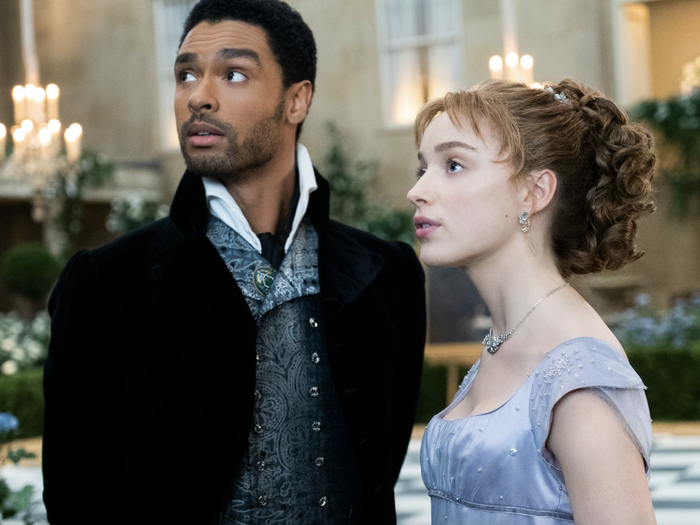
Here is how Regé-Jean Page and Phoebe Dynevor got to play Season 1’s two romantic leads, Simon Basset, the Duke of Hastings, and Daphne Bridgerton.
Page, who co-starred on the Shondaland ABC legal drama For the People, had been set in the role from the get-go.
“Shonda always always wanted Regé,” Robinson said. “The person I am proudest of casting is Phoebe because we did see A LOT of people for that role. I saw her on tape. and I was just taken by her because she is so captivating,” Robinson said.
Dynevor was the first actress Page read with, and it was an instant match.
“We managed to have this magical audition process with Shonda there where we put them together and I was able to direct them,” Robinson said.”Regé was already pre-decided but Phoebe came in and read. She was fantastic and got the role.”
While Robinson started to see Page as a heartthrob through the lens of the camera from Day 1 of production, she admitted that going into the project she had a different idea of him.
“It’s interesting about Regé, I hope he is not offended by this but I never saw him as a sex symbol,” she said. “I always saw him as a serious actor, very committed, a caring professional. And now look at him, I mean goodness me. It’s incredible, I hope he is the next James Bond.”
Episode 6’s sex scenes, done with input from an intimacy coordinator… and room monitors

The sex scenes from Simon and Daphne’s honeymoon, most of which were filmed in Castle Howard, took meticulous preparation.
“I felt that it was very very important for the actors to feel comfortable with these scenes, and to feel confident,” Robinson said. “And also there is so much learning in terms of consume that we had to do in terms what to take off when and where.”
She described the process of creating a sex scene on the show, which employed Lizzy Talbot intimacy coordinator.
“I would rehearse with the actors, we would talk through the scene in detail, and we would decide what story was that the scene was telling,” Robinson said. “Then Lizzy, who I trust immensely, went away, and it was almost like a stunt rehearsal. I would be doing dance sequence in the room next door, they would be doing an intimacy rehearsal. Lizzy would say, ‘Hey we are ready, we’ve got something to show you’. I would go in, I would look at what they did, and I would be specific about changes that I wanted just in the same way as I would be with a fight sequence and a stunt coordinator”
“We would keep working on it. When I was happy, I would bring Chris Van Dusen, who was a great collaborator throughout the entire production, and he would have notes. It was an incremental approach similar to choreographing a fight.”
Amid all the attention the scenes are garnering, Robinson stands by them.
“I was very proud of that because all that anybody talks about is the sex — undesirably by the way — but for me as a director, it was a storytelling challenge because it was about something but you couldn’t talk about and you couldn’t see, it was very delicate, and each scene had to tell a story. We achieved that; to get the nuances of those scenes right was my challenge as a director, and I was proud of the result.”
As for the story the sex scenes tell, “I think that it’s impossible to talk about female gaze without exploring issues of sex and power,” Robinson said. “So I was very interested in Daphne’s journey in the episodes, and seeing something that is normally told through one set of eyes, seeing it through another set of eyes.”
The hardest scene to shoot in that episode? It’s an easy guess.
“Shooting the honeymoon montage was tricky because that was shot all over the country, in a room here and a room there,” Robinson said of the montage to a rendition of Taylor Swift’s “Wildest Dreams”.
Then there are the limitations of filming sex scenes in an authentic Regency home.
“When you go into a country house, there is far less flexibility than you can ever imagine, you can’t move the bed, you can’t move the painting, you can’t move the wardrobe, and you have to be quite delicate with the furniture,” Robinson said. “So in the Duke’s bedroom, which was in Castle Howard, (Dynevor and Page) spent a lot of time in that bed, and there were room monitors in the room when we were doing the sex scenes, and they wouldn’t leave. The idea of a closed set is absolutely sacrosanct. But for these room monitors, their jobs were more sacrosanct to them. So they were in the scenes with us.”
The unexpected wallflowers would create some uncomfortable/comical situations.
“We would be shooting a sex scene and they would say, can you go easy on the bed, go easy on the bedpost,” Robinson said.
When Robinson came on board, the script for Season 6 had already been written with the controversial sex scene between Daphne and Simon where she holds him down against his will. The scene, which has reignited the discussion about consent, was very emotional for the actors to shoot, Robinson said.
“I adore those actors, Phoebe and Regé, I admire them, and we went on a journey when we were shooting that scene,” she said.
Locations: House swap, iconic castle, CGI square and matching sun light
From the moment Robinson touched down in London in late spring 2019, it was a race against time to secure locations as big country houses are booked months in advance. Her very first day there, she, production designer Will Hughes-Jones and his team visited Castle Howard, which Robinson knew from Brideshead Revisited and had visited with her family while vacationing the year before. It was booked on the spot for Episode 6.
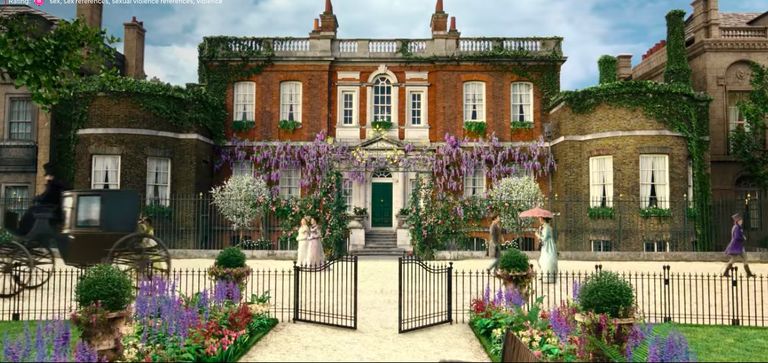
Netflix
Robinson’s English background came in handy. “For example, the Bridgerton house, I used to walk past that every day, I used to live right there,” Robinson said before making a revelation.
“Originally, that was the Featherington house; Betsy and Chris decided to switch that to be the Bridgerton house. I’m really glad they did.”
The switch happened during an elaborate presentation Robinson and Hughes-Jones made for the producers.
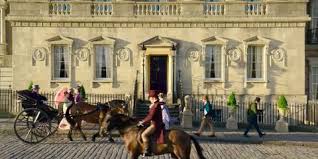
Netflix
“The Featherington house, Will and I loved it because it was a very, very classic Regency house but in retrospect, it did look rather cold, and that was the vibe we were going with the Featheringtons. And then the way Betsy put it with the with the Featherington house that became the Bridgerton house, the one I walked by every day, it is kind of reaching out, its arms reach out to embrace you. It’s much more of a homely home.”
The two house exteriors in two different cities (Greenwich, London and Bath) are part of the posh Grosvenor Square, which in reality does not exist.
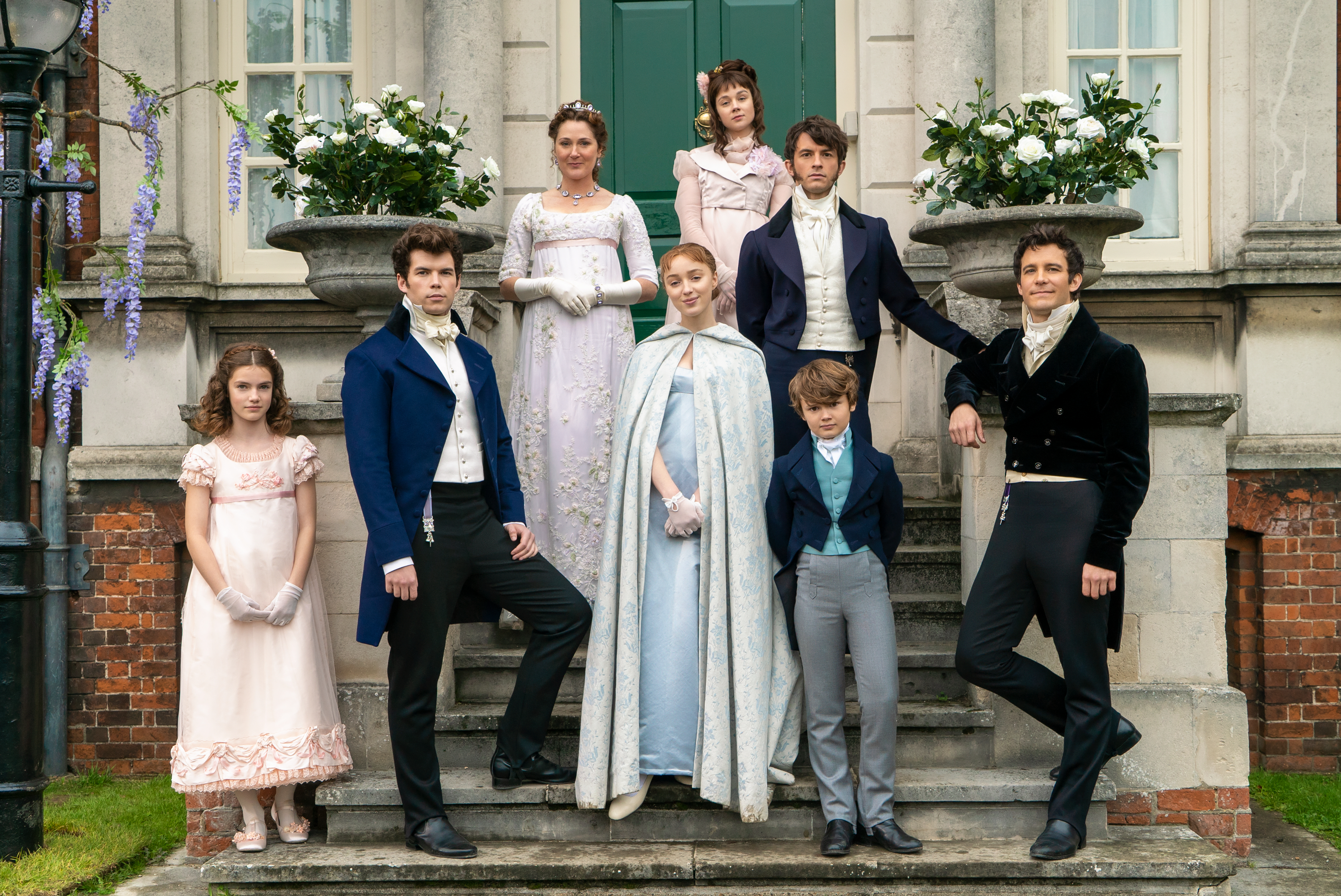
“There is not much Regency England left, which is hard to comprehend,” Robinson said. “So you are almost doing sci-fi type show; you are finding these pieces that work for the show and then you do a lot of green screen and a lot of creation.”
That includes the Grosvenor Square which was built using CGI during post-production integrating the two real houses.
“The production difficulties of that were so huge because we had to shoot across people, we had to somehow join these houses, we had to shoot at the right time of day so the sun matched. It was incredibly logistically tricky,” Robinson said.
Visual effects extended beyond buildings to background actors.
Bridgerton used an enormous number of extras — the show employed some 200 background dancers because “we wanted all the dances to feel rich and full.” They were all wearing “absolutely extraordinary costumes, down to the finest detail.” (The series used some 7,500 pieces of clothing in Season 1, all created specifically for the series.)
But “sometimes we didn’t have enough costumes, so what we did, we would green screen people and would be able to replicate them in order to achieve the sense of fullness that we really wanted,” Robinson said. “In the ballroom scene we didn’t do it but there were other scenes. For example, when Daphne goes to the Queen, there is a certain amount of doubling up, doubling up, doubling up in order to create the sense of chaos and fullness.”
That could be a technique the show employs more often a Season 2 as star Dynevor last week expressed concern about filming a show with so many background performers — and a fair share of sex scenes — during the pandemic.
Choice of first scenes shot
The very first scenes for three major characters in Season 1 were all sex encounters, Simon and Daphne’s library romp (part of the honeymoon montage) and Anthony (Jonathan Bailey)’s escapade with Siena against a tree. It was not a creative decision.
“There is far less choice than people understand in terms of production, in terms of scheduling,” Robinson said. “For this production in particular, it’s very important to start small with a limited number of actors because that gives hair and makeup a chance to build the rest of the cast while you are shooting a scene.”
There was another factor in the library scene’s timing.
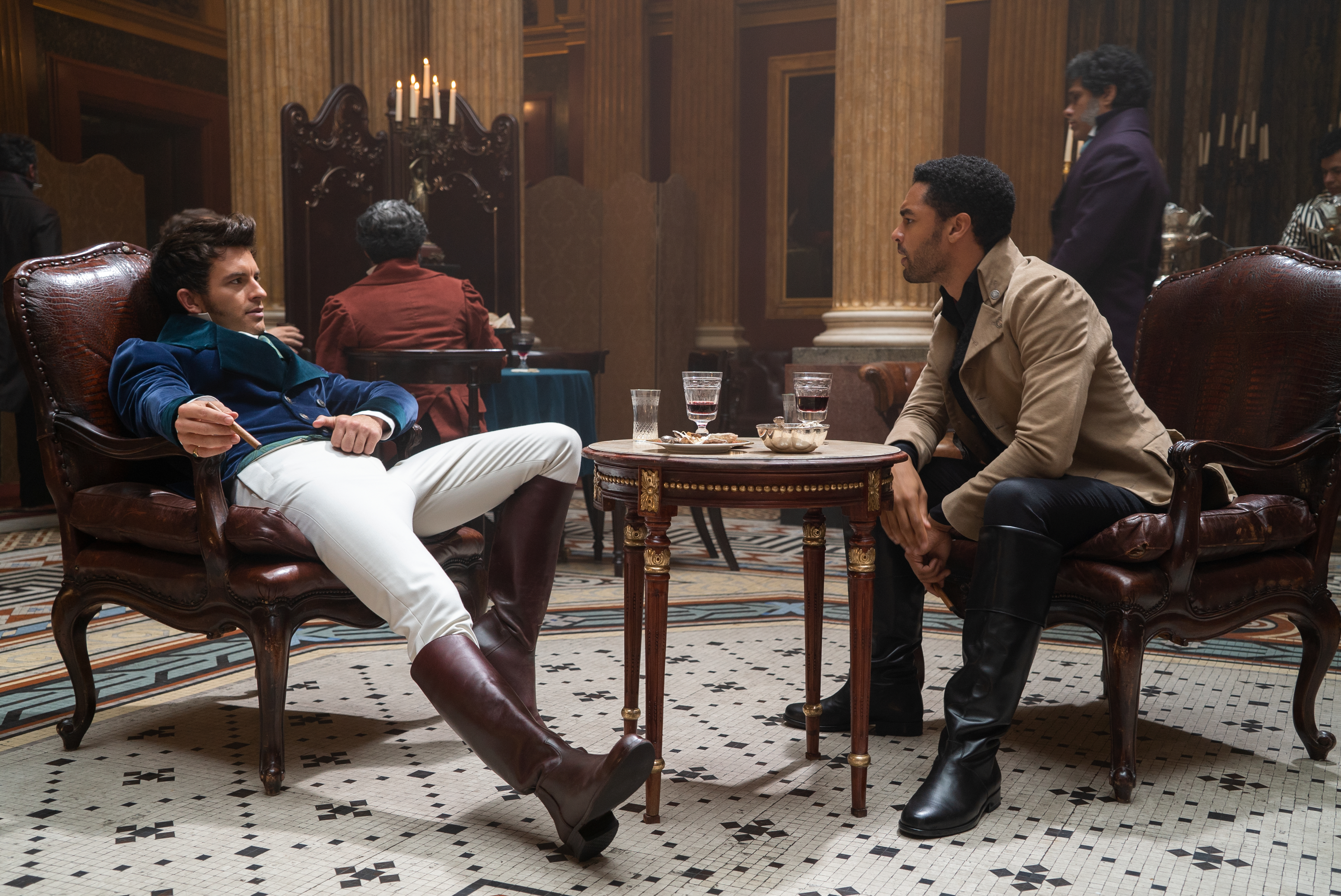
“We were shooting in this very stuffy Reform Club, and we had a scene upstairs with Phoebe and Regé and then a big scene downstairs with a large number of cast,” Robinson said. “Unfortunately, that place was available one specific date only. I think I wouldn’t have chosen to do it that way. I believe as a director, we are going to have do it sometime, we should just dive in and shoot it, because it was the right location and it was our only opportunity to shoot in that location. It is not a perfect world, sadly.”
Learning curve — etiquette training, horseback filming
“As much as it was a voyage for the actors, it was also a voyage for me because I had never done period before,” Robinson said about working on Bridgerton.
“We did etiquette rehearsals – there are so many things that you don’t even think about – we had learn how to do curtsy, we had to learn how to bow, we had to learn how to nod our head,” she said. “For example, there is a thing called ‘the cut’ in etiquette terms. It’s where you are standing in a ballroom and you look across the room and catch the eye of somebody else. You might nod and the person across the room can look away without acknowledging you, that’s called ‘the cut’. I love that because that’s what happens now, there is nothing worse. Everything (on the show) was couched in terms of what the contemporary relevance was.”
A veteran director, Robinson also learned something new about her craft while filming Bridgerton.
“There is a scene in Episode 1 where Phoebe and Jonathan are on horseback and having a very long, very important conversation,” Robinson said about the scene, in which Daphne confronts her brother about his meddling in her love affairs. “That is one of my favorite scenes that I have ever directed.”
Shooting it involved Dynevor taking riding lessons. “And then we had to shoot the scene. I couldn’t believe how difficult it was to get these horses to ride side by side so I could get a nice two-shot or a single. It was horrific.”
While Robinson was having a hard time directing two human and two four-legged actors at the same time, an English crew member came to her and asked her why she was using real horses.
“And then he showed me this mechanical contraption that apparently every other period production in England uses. Two horses, they bop up and down and you paint them horse color,” she said. “Nobody mentioned it so we have this scene, which must be very very rare – two horses riding along. I think the actors, they did such a brilliant job with that scene, and I apologize to them for putting them through it.”
Robinson also confirmed previous comments by Page about the horses being real divas on set who would take off anytime someone yells “Action”. As a result, all “action” calls were done in a whisper in the presence of horses, she said.
Filming a ball the hard way

personal archive
“It was incredibly hard,” Robinson said of filming the first ball scene. “It was very, very long. And the way that Chris writes, it’s almost like he writes in a montage at times. It’s layer upon layer of detail and complexity, and conversations are dashing about all over the room.
“In addition to that, my DP Jeff Jur and I decided to shoot into the body of the room rather than towards the wall,” Robinson said. “If you look at a ballroom scene, traditionally it’s shot towards the wall. Obviously, if you shoot toward the dancing, you have to be incredibly precise and specific about what exact dance move someone is doing in that specific point of the dialogue.”
That meant extensive rehearsals and timing the dancers “so we knew exactly what dancers were happening where at what point.”
It was a painstaking process but “we had a very strong idea about how we wanted to shoot it, we wanted the sense of momentum and life.”
Style inspirations
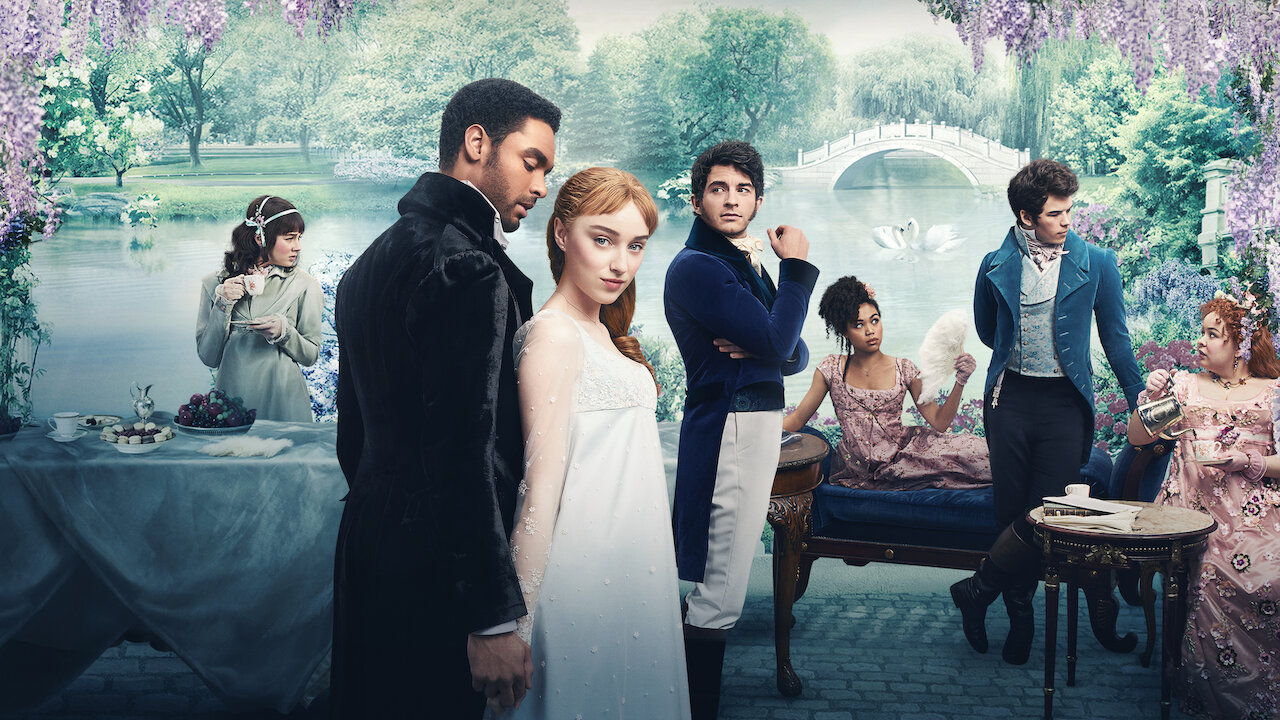
In preparation for the shoot, Robinson and her team watched such films as The Duchess, War and Peace, The Red Shoes, and Sofia Coppola’s Marie Antoinette.
But while Bridgerton is getting notice for its look and bright colors, that was not a focal point.
“I didn’t want to let the style to overwhelm the story,” Robinson said.
Bridgerton’s Pop Soundtrack
Viewers were in for a surprise when the first of 11 balls in Season 1 opened with Ariana Grande’s “Thank U, Next”. It was the first of a slew of instrumental classical covers of popular songs, including Maroon 5’s “Girls Like You”, Shawn Mendes’ “In My Blood”, Billie Eilish’s “Bad Guy” and Celeste’s “Strange”, along with Swift’s “Wildest Dreams”.
“That was something that I was very, very keen on right from the very beginning, and luckily Shondaland was on board with it,” said Robertson, who lists the Heath Ledger starrer Knight’s Tale, known for incorporating classic rock songs, as a reference.
“The dancers were choreographed to contemporary music (watch below a clip from a dance rehearsal to Ed Sheeren’s “Perfect”) but it could be danced to music from the era in case people got cold feet in post,” Robinson said. “We had a range of choices so we could go more contemporary or less contemporary just to make sure have tonal references in post-production. If we wanted it to be more restrained, we could do a more restrained version.”
Having dancers rehearse to contemporary hits gave them “a kind of boost and, because all the actors obviously had to learn the choreography, they understood from that moment what we were not doing a traditional period show, we were doing something slightly different,” Robinson said.
No Starbucks cups & Filming Around The Man in Orange
While Bridgerton has had to occasionally reshoot outdoor scenes when a plane would fly over, Robinson said that there were no signs of modern world that snuck their way onto film when she was working with the footage during post-production in the vein of the infamous “Starbucks cup” on Game of Thrones. That is largely due to production designer Hughes-Jones’ unorthodox strategy how not to allow any non-Regency visuals into the show with the help of on-set art director David Crewdson.
“Will was obsessive about period detail,” Robinson said. “He would get David to dress in orange. If there was something Will didn’t like, if there a roof he didn’t like, David would go and stand there and wouldn’t move. We would know that we couldn’t move the camera where we would see this guy dressed completely in bright orange. That was a great idea.”
A nun’s approval
Robinson did not find out about Bridgerton‘s breakout success right away as she never read reviews, previews and interviews about any of her work. Gradually, she became aware of the show’s popularity from congratulatory emails which also broke the news to her that Season 1 had scored more than 90% on Rotten Tomatoes.
Then she learned of Bridgerton‘s worldwide appeal first-hand.
“My mom said to me, I’m buying a new television to watch Bridgerton,” Robinson said. “And then she told me that for her best friend, a nun in her 80s, it was her favorite show. She sent me a picture of this nun going thumbs-up.”






